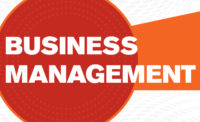As the energy transition accelerates, one critical challenge threatens to impede progress: a shortage of skilled workers. As the new school year gets underway, it's a reminder that our future workforce is being shaped today. An emphasis on four-year degrees has left a substantial gap in vocational education, one that is crucial to filling if we are to meet the demands of the energy transition.
The scope of the workforce crisis in the skilled trades is staggering. The construction industry alone faces a deficit of 500,000 workers, while the number of certified HVAC technicians has plummeted by 50% over the last decade. This shortage is not just a statistic; it’s a real impediment to decarbonizing our built environment. Residential, commercial, and industrial projects are all feeling the pinch, with timelines extending and costs rising as we struggle to find the skilled leaders needed to implement critical energy-saving technologies.
A significant contributor to this shortage is the persistent stigma surrounding vocational education. Despite the growing need for tradespeople, 79% of Gen Z respondents report feeling pressured by their parents to pursue a college degree, while 74% acknowledge a stigma associated with vocational school. This mindset overlooks the reality that trades offer high earning potential, job security, and an essential role in our society’s transition to sustainable energy solutions.
However, there is hope on the horizon. Increasing skepticism about the rising costs of college and the potential threats posed by AI to white-collar jobs are driving a renewed interest in the trades among younger generations. This "Toolbelt Generation" is starting to see the value in careers that offer hands-on work, stability, and the chance to contribute to the greater good.
To harness growing interest, we need to expand access to apprenticeships and vocational training. These programs offer practical, on-the-job experience that is invaluable for developing the next generation of skilled workers.
To address the rising demand for electricians, projected to exceed 73,000 new jobs annually until 2032, companies like Sunrun are leading the way with initiatives like their PowerU program, which provides fully-funded education and training for employees. Since its launch in 2021, more than 1,700 employees have enrolled, addressing the solar industry's need for skilled workers—projected to exceed 900,000 by 2035 to meet clean energy goals.
At Budderfly, we’re taking a similar approach by partnering with trade schools to train energy technicians in advanced HVAC/R technologies. This is a direct response to the alarming 50% decrease in certified HVAC technicians over the past decade. By donating state-of-the-art energy technologies from partners like Fujitsu and Carrier, we ensure that students receive hands-on training with the latest equipment, preparing them for a projected 6% annual growth in demand through 2032.
It’s not just about what companies can do—community involvement is critical to changing perceptions and building a robust pipeline of skilled workers. Employers have a unique opportunity to engage with local schools, offering apprenticeships, summer work opportunities, mentorships, and workshops. Parents and educational systems also play a vital role in promoting trades as a viable and rewarding career path. Budderfly and Sunrun are just two examples of companies actively participating in these efforts, but we need more industry players to step up.
These jobs require strong skill sets, and the industry is increasingly embracing cutting-edge technologies that make these careers more appealing and future-proof. Robotic equipment, AI-resistant job roles, and new tools are transforming the trades, making them more efficient and safer.
Overcoming the workforce challenges in the skilled trades is essential for the success of the energy transition. By investing in vocational training, apprenticeships, and community engagement, we can bridge the skills gap and build a workforce capable of driving innovation and sustaining our economy.








